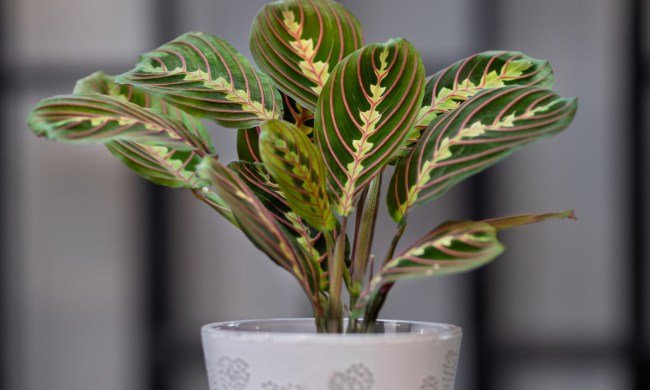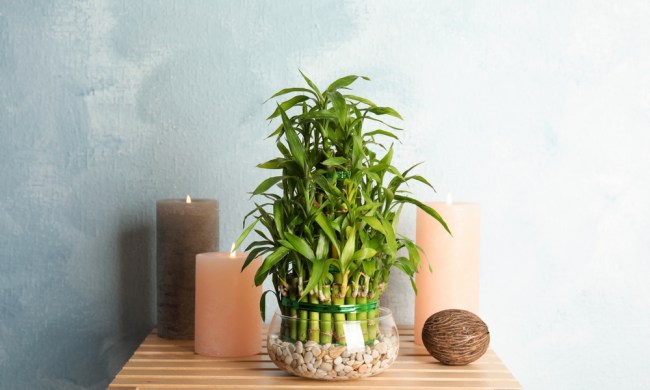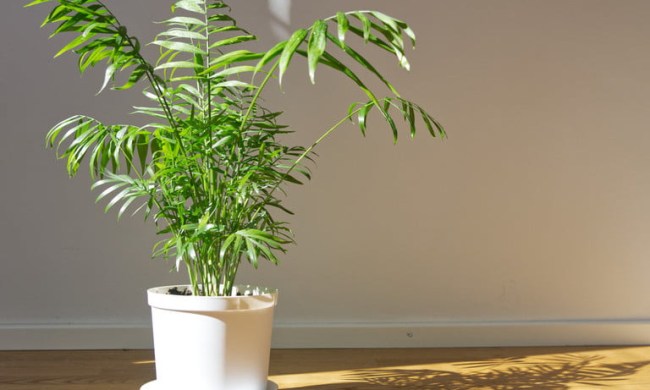Instagram is a never-ending source of cool, crazy, fun, beautiful, and just plain weird images. For plant lovers, it’s a great place to learn about new species and gain inspiration for the next gardening project. If you’re looking to exercise your green thumb, it just may be the place where you find your next “it” plant. We perused the site to find some fun plants with the craziest shapes, wildest colors, and most jaw-dropping super flora abilities! Check out this roundup of weird but awesome houseplants from around IG.
Tephrocactus geometricus
This eye-catching relative of prickly pear is native to hot, dry regions of Argentina and Bolivia. It grows in globular buds that look like a pile of blue-green to purplish balls. When conditions are just right, it produces flowers of white or light pink that last only one day, so be sure to keep an eye on it so you don’t miss the blooms. Although it’s a cactus, it is nearly spineless, making it a fun piece that’s also safe for any pets running around.
Lithops
Is it a rock or a plant? Lithops gets the common name Living Stone from its pebble-like appearance, but another argument could be made that its nickname comes from the fact that it only needs as much water as a rock. This low-maintenance desert plant goes through an extended dormant season through the winter months when it should not be watered at all. Then, during the height of the warm growing season, it only needs a spritz about twice a month.
Anthurium Red Crystallinum
That gorgeous red foliage from this plant is fleeting, making the brilliant color even more special. Anthurium ‘Red Crystallinum’ produces a bright red growth before maturing to velvety green color with silver-white veins. The showy “flower” on this plant is actually no flower at all, but a modified leaf called a spathe. The spathe protects the long, slender flower cluster called the spadix, which also works to attract pollinators. Don’t let its beauty fool you, though. This plant contains calcium oxalate crystals that cause severe irritation if ingested.
Oxalis palmifrons
This oddly attractive perennial succulent is known as Palmleaf Shamrock because the individual leaves look like palm trees. Overall, however, the plant looks like a huge green snowflake from above. Since this South African succulent grows in the winter months and goes dormant in the heat of summer, it grows extremely slowly, with leaves that grow as little as two inches wide over the course of a decade.
Euphorbia suzannae cristata
Looking for a plant that doubles as a science project? This succulent looks just like green terrestrial coral and actually bleeds white when punctured. All members of the Euphorbia genus produce similarly milky sap that can cause irritation for those with latex sensitivity. The compounds in this sickly sap are the plants’ defense against being eaten. Instead of stabbing with spines, like cacti, euphorbias poison their would-be diners.
Tillandsia tectorum
Tillandsia, also known as air plants, do not grow in soil and their roots do not absorb water or nutrients. Instead, as an epiphyte, the roots attach themselves to other plants for support and absorb water and nutrients through their foliage. This species grows naturally in large wild colonies on Andean cliff faces of Peru and Ecuador. Other epiphytes include many species of mosses, orchids, bromeliads (including Spanish moss), and ferns, among others.
Monstera
Trypophobes beware: This Swiss cheese-looking plant is famous for its holey leaves. The holes, or fenestrations, develop with age and size, so while younger, smaller plants have mostly solid leaves, the matured, taller plants display the characteristic fenestrations. Little is known about the cause of these holds, but botanists hypothesize it may have to do with access to sunlight, channeling rainfall toward the roots, or possibly sustaining itself during the Central American hurricane-force winds.
Searching for new plant inspiration on Instagram is a fun and easy way to pass the time. Caring for a plant, especially a unique or exotic one is, a little bit more difficult. Before dropping a dime on new plants, be sure to compare their needs to your growing conditions, time commitment, and abilities. It’s easy to water a desert plant every so often, but it’s a lot harder to give palms enough light in a place with few windows. If it all seems somewhat less than a good fit, don’t worry, IG has plenty of other weird stuff to entertain you during your downtime.



